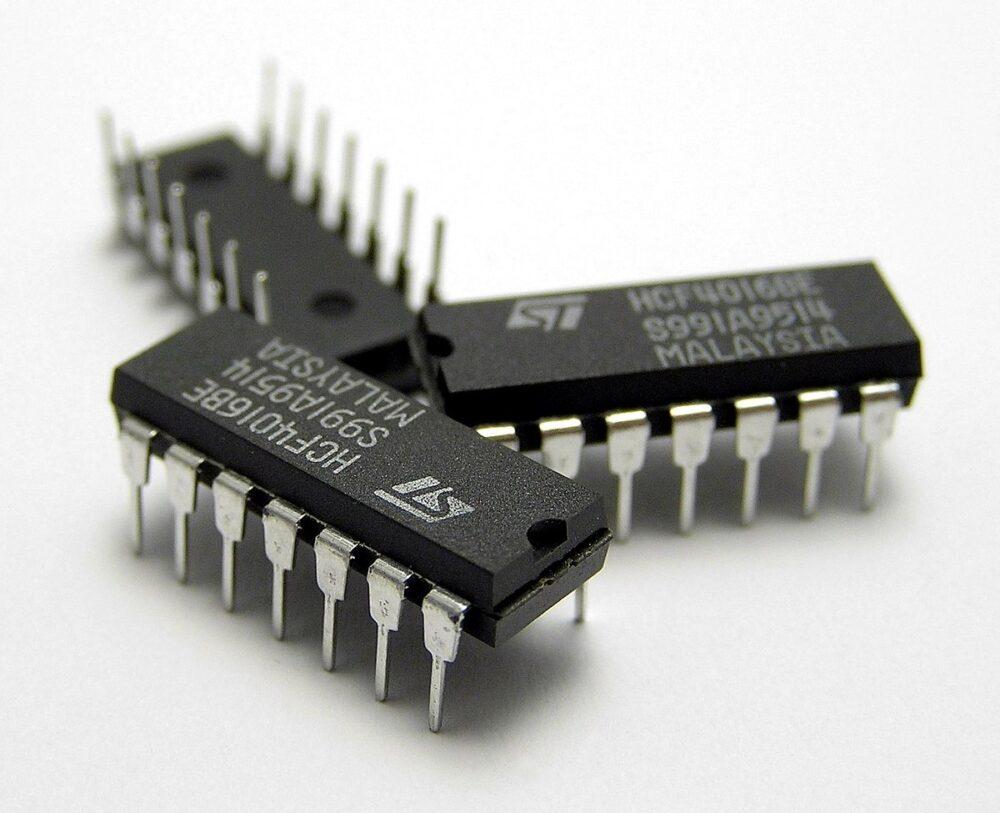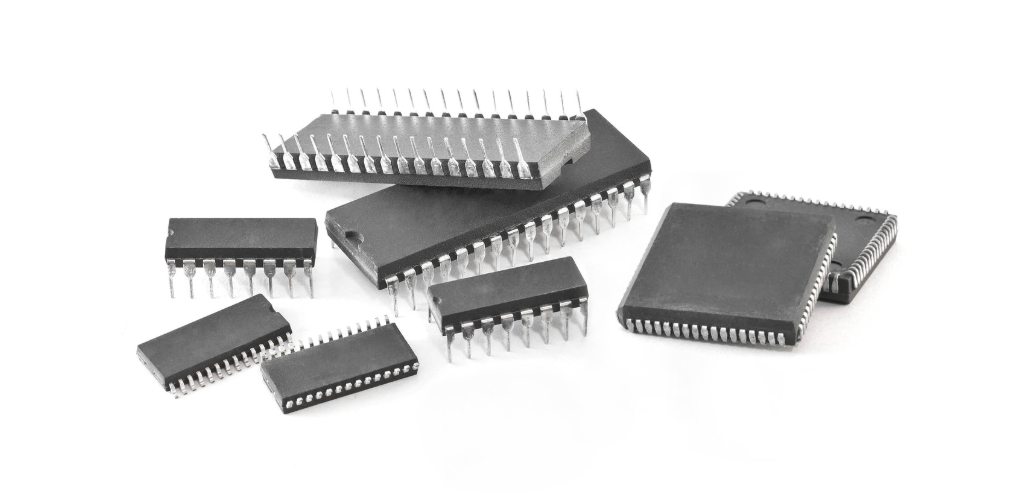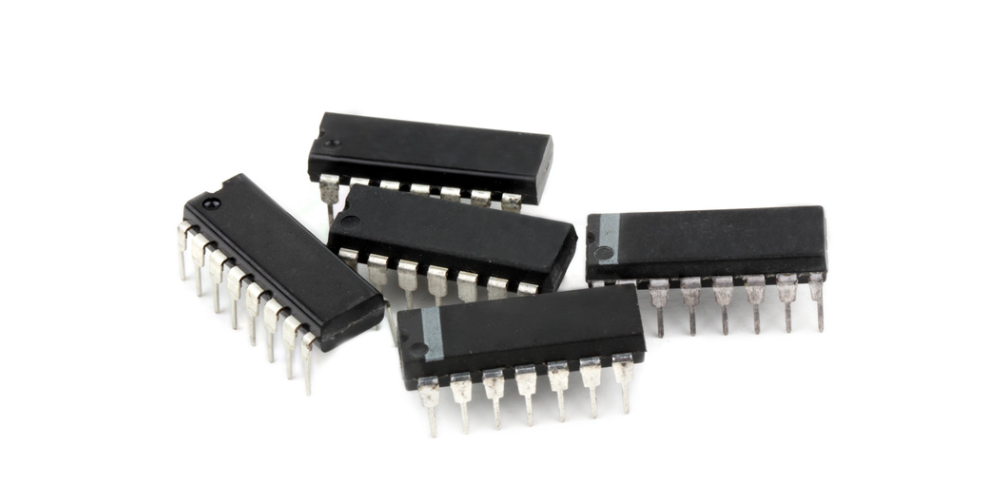Integrated Circuits (ICs)

More from the Category
Integrated Circuits (ICs) are miniaturized electronic circuits composed of interconnected electronic components, such as transistors, diodes, and resistors, fabricated on a single semiconductor wafer or chip. They are the fundamental building blocks of modern electronic devices, enabling the integration of complex circuitry in a compact and efficient manner.
A Brief History of ICs
The development of ICs has evolved over several decades, driven by advancements in semiconductor technology and the visionary work of numerous scientists and engineers. From early breakthroughs in transistor technology to the era of billion-transistor chips, ICs have redefined what’s possible in electronics.
Early Developments and Pioneers
The Transistor Revolution (Late 1940s–1950s): The foundation of ICs began with the invention of the transistor at Bell Labs in 1947 by John Bardeen, Walter Brattain, and William Shockley. This breakthrough replaced bulky vacuum tubes and enabled miniaturization.
The First Integrated Circuit (1958): In 1958, Jack Kilby of Texas Instruments built the first working IC, successfully integrating multiple components-resistors, capacitors, and transistors-on a single piece of semiconductor material.
Planar Process Innovation: Around the same time, Robert Noyce of Fairchild Semiconductor and Jean Hoerni of Planar Process Corporation independently developed the planar process, a key manufacturing technique that made mass production of ICs feasible and reliable.
Key Milestones in IC Advancement
1960s-Small and Medium Scale Integration (SSI & MSI): Early ICs began integrating tens to hundreds of transistors per chip, enabling more compact and efficient systems for calculators, radios, and defense electronics.
1970s - Large Scale and Very Large-Scale Integration (LSI & VLSI): The industry progressed to thousands, then tens of thousands, of components per chip. This decade saw the birth of microprocessors and early personal computers.
1980s-1990s - Ultra Large Scale Integration (ULSI): With advances in photolithography, materials science, and automated design tools, engineers packed millions (and eventually billions) of transistors onto a single chip, giving rise to high-performance computing and complex SoCs (systems on a chip).
Modern Era - Continuous Miniaturization: IC performance continues to improve through innovations in process nodes (5nm and beyond), multi-layer chip stacking, and energy-efficient architectures, pushing the limits of Moore’s Law and enabling AI, 5G, and quantum research applications.
Types of Integrated Circuits

Integrated circuits can be classified into several types based on their functionality and applications:
Digital Integrated Circuits
Digital ICs process discrete signals, operating with binary values (0s and 1s). They form the foundation of logic systems and computational hardware.
• Functions: Logic operations, data storage, signal processing, and arithmetic tasks.
• Examples: Logic gates, microcontrollers, digital signal processors (DSPs), field-programmable gate arrays (FPGAs)
Analog Integrated Circuits
Analog ICs handle continuous signals and are designed to process varying voltage levels, typically found in real-world analog inputs.
• Functions: Amplification, filtering, modulation, and demodulation
• Examples: Operational amplifiers (op-amps), voltage regulators, audio amplifiers, analog-to-digital converters (ADCs), digital-to-analog converters (DACs)
Linear Integrated Circuits: Linear ICs are a subtype of analog ICs where the output signal is directly proportional to the input. They are commonly used in signal amplification and conditioning applications.
• Functions: Voltage amplification, signal conditioning, voltage regulation
• Examples: Operational amplifiers, voltage regulators, audio amplifiers, instrumentation amplifiers
Mixed-Signal Integrated Circuits
Mixed-signal ICs combine both analog and digital functions on a single chip, facilitating communication between digital processors and analog interfaces.
• Functions: Interfacing between analog and digital domains in complex systems
• Examples: ADCs or DACs with integrated control logic, application-specific integrated circuits (ASICs) with mixed functionality
Memory Integrated Circuits
Memory ICs are dedicated to the storage and retrieval of digital data and are fundamental to both temporary and permanent data retention in electronic systems.
• Functions: Data storage, retrieval, and memory management in computing and digital systems
• Examples: Read-only memory (ROM), random-access memory (RAM), flash memory, EPROM, EEPROM
Microprocessors
Microprocessors are specialized ICs that serve as the central processing units (CPUs) in computers and digital devices. While technically a type of digital IC, they are often categorized separately due to their complexity and central role in system operation.
• Functions: Instruction execution, control of digital systems, data computation
• Examples: General-purpose CPUs, embedded processors, system-on-chip (SoC) processors
Advantages of ICs Over Discrete Components:
Size and Weight Reduction: ICs enable the consolidation of multiple components into a single chip, reducing the size and weight of electronic devices.
Improved Performance: Integration allows for shorter interconnection paths, leading to faster signal propagation and improved overall performance.
Reliability: ICs offer improved reliability due to reduced interconnection points and enhanced manufacturing processes.
Power Efficiency: Integrated circuits consume less power compared to discrete components, leading to improved energy efficiency.
Cost-Effectiveness: Mass production of ICs results in lower production costs per unit, making electronics more affordable for consumers.
IC Design and Manufacturing
The design and manufacturing of integrated circuits is a multi-stage process that combines electronic engineering, materials science, and precision fabrication techniques.
IC Design Process:
Specification: Defining the requirements, functionality, power constraints, and intended application of the IC.
Circuit Design: Creating the circuit diagram and optimizing the transistors, resistors, and capacitors for the desired performance.
Layout Design: Determining the physical arrangement of components on the chip and designing interconnections. This requires balancing performance, area and manufacturability.
Verification and Testing: Simulating and testing the design to ensure functionality and performance.
Semiconductor Materials:
Silicon is the most commonly used semiconductor material for IC fabrication due to its abundance and desirable semiconductor properties. Other materials, such as gallium arsenide (GaAs) and indium phosphide (InP), are used for specialized applications that require high-speed or high-frequency performance.
Fabrication Techniques:
The semiconductor fabrication process transforms raw silicon wafers into finished ICs through a series of highly controlled steps:
Wafer Preparation: Pure silicon is sliced into wafers, polished, and cleaned to create the substrate for circuit construction.
Photolithography: A core technique in IC manufacturing, photolithography uses ultraviolet light and photomasks to transfer circuit patterns onto the wafer’s surface.
Etching: Removes unwanted material either chemically or physically, defining the intricate features of the circuit.
Deposition: Various materials, such as metals, oxides, and nitrides, are deposited in thin layers to build the active and passive components of the IC.
Packaging: After fabrication, the wafer is diced into individual chips, each of which is packaged to protect it and provide electrical connections to external systems.
Integrated Circuit Manufacturers
NXP Integrated Circuits: NXP Semiconductors offers a broad range of ICs, including microcontrollers, application processors, DSPs, RF ICs, and automotive solutions. Its Kinetis and LPC MCU families excel in energy-efficient applications like IoT and wearables, while the i.MX RT series brings real-time performance to industrial and multimedia systems. With Layerscape processors for automotive and networking, and Vision DSPs for AI at the edge, NXP delivers high-performance, reliable ICs that power innovation across industries.
Learn more about NXP Integrated Circuits
Intel Integrated Circuits: Intel delivers high-performance ICs spanning CPUs, FPGAs, SoCs, and networking solutions. Known for its Xeon and Core processors, Intel also leads in reconfigurable computing through its Altera FPGA line, supporting data centers, industrial systems, and automotive applications. Its ICs play a vital role in AI, 5G, and edge computing, making Intel a key driver of scalable and efficient digital solutions.
Samsung Integrated Circuits: Samsung is a leading semiconductor manufacturer, known for its extensive portfolio of integrated circuits spanning memory, logic, and system-on-chip (SoC) solutions. It produces DRAM, NAND flash, image sensors, and high-performance processors for smartphones, data centers, and consumer electronics. With advanced fabrication capabilities down to 3nm, Samsung also serves as a major foundry for global tech firms. Its IC innovations drive progress in mobile computing, AI, automotive, and high-speed connectivity.
Applications of Integrated Circuits (ICs)
Integrated circuits (ICs) are foundational to modern electronics, enabling compact, reliable, and high-performance designs across a wide range of industries:
Consumer Electronics
ICs power various consumer electronics such as smartphones, tablets, laptops, televisions, gaming consoles, and smart home technologies. They enhance device performance by improving processing speed, connectivity, and energy efficiency.
Integrated Circuits in Smart Home Devices: Integrated circuits are essential to the intelligence and connectivity of smart home devices. They power functions like wireless communication, environmental sensing, data processing, and power management in products such as smart thermostats, lighting systems, security cameras, and voice assistants. By enabling real-time responsiveness, seamless interoperability, and energy-efficient operation, ICs transform ordinary household devices into adaptive, connected solutions that enhance comfort, safety, and sustainability.
Learn more about Integrated Circuits in Smart Home Devices here!
Telecommunications
In communication systems, ICs are integral to mobile phones, base stations, routers, and satellite infrastructure. They ensure reliable data transmission, low-latency communication, and efficient signal processing.
Medical Devices
ICs are used in advanced medical technologies like pacemakers, hearing aids, insulin pumps, diagnostic instruments, and imaging equipment. Their compact size and low power consumption contribute to precise, real-time monitoring and improved patient outcomes.
Automotive Systems
Modern vehicles rely on ICs for engine control units (ECUs), anti-lock braking systems (ABS), infotainment platforms, and advanced driver-assistance systems (ADAS). These applications support safety, in-vehicle connectivity, and overall vehicle performance.
Aerospace and Defense
ICs are critical in navigation systems, radar technology, satellite communication, and guidance controls. Their robust design and reliability support mission, critical functions in aerospace and defense systems.
Future Trends in IC Technology

Integrated circuit (IC) technology continues to advance rapidly, shaped by innovation and growing demands for smarter, faster, and more efficient electronics. Key trends shaping the future of ICs include:
The Evolution of Moore’s Law
For decades, Moore’s Law - the observation that the number of transistors on a chip doubles approximately every two years, has driven IC miniaturization and exponential gains in performance. However, as transistor dimensions near atomic limits, the industry is pivoting toward alternative approaches such as:
- • Nanoelectronics for enhanced efficiency at the atomic scale
- • Quantum computing to harness new models of computation
- • Neuromorphic computing to mimic human brain architecture for AI and signal processing
System-on-Chip (SoC) Integration
System-on-Chip technology merges processing units, memory, input/output interfaces, and connectivity modules onto a single chip. This integration:
- • Reduces power consumption and board space
- • Lowers manufacturing and assembly costs
- • Enhances speed and reliability in compact devices like smartphones, wearables, and embedded systems
ICs in the Internet of Things (IoT)
The explosion of IoT devices, from smart home gadgets to industrial sensors, has intensified the need for:
- • Ultra-low-power ICs for energy efficiency
- • Miniaturized chips that fit into compact, remote environments
- • Built-in sensing, connectivity, and processing to support real-time data collection and communication
ICs and Quantum Computing
Quantum computing introduces a paradigm shift, solving problems beyond the reach of classical computers. ICs play a pivotal role by:
- • Enabling the control and manipulation of qubits
- • Supporting cryogenic environments and error correction
- • Advancing the interface between quantum systems and classical infrastructure
Challenges and Limitations
While ICs have brought tremendous advancements, several challenges and limitations persist:
Heat Dissipation and Power Consumption: As ICs become smaller and more powerful, managing heat dissipation and reducing power consumption become critical to prevent overheating and ensure energy efficiency.
Shrinking Transistor Sizes: Shrinking transistor sizes face physical limitations, including quantum effects and leakage currents, requiring innovative solutions such as new materials, alternative device structures, and nanoscale technologies.
Security Concerns and Countermeasures: The increasing complexity and connectivity of ICs raise concerns about security vulnerabilities, including hardware-based attacks and data breaches. Robust security measures and hardware-level protections are essential.
The Future of Integrated Circuits
Integrated Circuits (ICs) have transformed the world of electronics, enabling compact, efficient, and powerful electronic devices across various industries. From consumer electronics to telecommunications, automotive systems to medical devices, ICs have revolutionized technology and impacted society. Understanding the history, types, design, and applications of ICs provides insights into their immense potential and challenges. As IC technology continues to evolve, future trends like SoC integration, IoT, and quantum computing will shape the next generation of electronic devices, paving the way for exciting advancements in the digital age.
Interested in learning about other essential electronic components? Check out this deep dive
Partner with Us
At Microchip USA, we’re proud to be at the forefront of this technological transformation, delivering high-quality integrated circuits and a wide range of electronic components to meet your evolving needs. Contact our team today to discover how we can support your next innovation.









